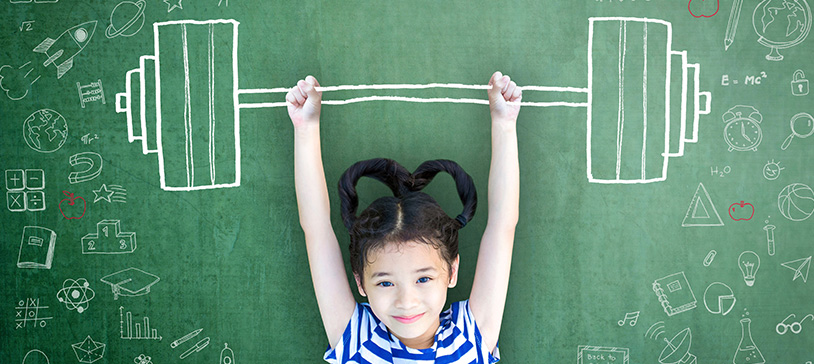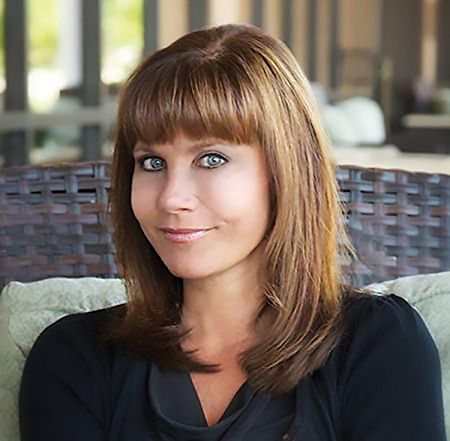
THRIVE

A strength-based approach to education
Jenifer Fox is the bestselling author of “Your Child’s Strengths” and “The Differentiated Instruction Book of Lists.” She has over 30 years of experience as a school leader, speaker and consultant. Her work includes founding The Delta School, a K-12 project-based school with focus on developing strengths through the Maker’s Movement in Wilson, Arkansas. She has degrees from the University Wisconsin-Madison, Middlebury College and Harvard University. Fox currently consults with schools on helping teachers become project-based instructors and designing projects. Her strengths curriculum is widely used in schools throughout the world.

What are your “top-of-mind” thoughts about the new landscape and the role of strength-based education within it?
The pandemic shed light on two things. First, it exposed a technological gap between teachers and students. The digital divide became clear as day. Any teacher who avoided technology integration was at a stress-induced disadvantage when, within the matter of weeks, they were forced to take their classrooms online.
Teachers who were tech-oriented inspired their students and helped them grow outside of the classroom. Since the pandemic has settled down, it is still apparent that teacher training in technology is not just for the interested few.
Teachers must be adept at teaching with digital tools and there are hundreds of great tools at their disposal. Today’s students are considered digital natives so we cannot have teachers who are not savvy in how these tools facilitate learning.
Secondly, it is time to embrace the community as classroom. It is no longer a progressive idea that students engage in inquiry-based, project-based, hands-on learning to be truly educated. Strengths-based learning means nothing if students are not provided the opportunity to do something. A strength is something that energizes you, and because it gives you energy, you will keep doing it and develop greater skill. Unless you are performing a task, you cannot feel the spark of energy to know if you are motivated or not. Project-based learning is the way we discover students’ strengths.
Can you speak to how ripe this moment is for innovation?
I believe the key to genuine innovation lies in enhanced human connections and engaging students in educationally purposeful activities. The concepts that have been considered “innovative,” such as experiential learning, authentic assessment, backward design, place-based learning, and maker spaces may not be new, but they are still struggling to be adopted by most schools. These practices are often referred to as “high-impact” strategies, intended to make teaching and learning more intentional, coherent, developmental and transformative. We must continue to push for the implementation of these practices. The time is as ripe as it can be because we need to get children back to the classroom and give them something to come back to.
“I believe the key to genuine innovation lies in enhanced human connections and engaging students in educationally purposeful activities.”
-Jenifer Fox
We need a new narrative for education. When we shift our focus from achievement to meaning, the whole story changes. The educational system cannot be transformed through innovation without a new narrative to back it up. This was made evident with the birth of the internet. The entire world changed due to the web, but schools, even while adopting computers, did not significantly change their outcomes.
Education is most successful when the student is viewed as someone who has something meaningful, unique and important to add to the collective. As teachers and parents, our role becomes helping children discover what that contribution will be. That is at the heart of the Strengths Movement and once a child understands this purpose, teaching fundamentals like reading, writing and math are easier. Education changes when we shift the focus from what a person needs to know, to what they can do that is meaningful to them and to their world.
When viewed through that narrative, teachers start to think of themselves not simply as content specialists, but as mentors, learning architects, skills builders, and team leaders who conduct inquiries and investigations in partnership with their students.
You speak about humanizing education. What steps are critical to make that happen?
The first step is to redefine the purpose of education. The purpose must address the challenges and opportunities of the future that today’s children will face. This shifts the focus from the content of the curriculum to the needs of the human being.
The second step is then to align the outcomes with the purpose. Schools are designed around a very limited set of outcomes, and rarely do these outcomes address what people need to know to make the world sustainable, equitable and safe for today’s children.
Next, we must challenge the notion that education is a competitive game. This assumption lies at the heart of change. A learner-centered paradigm insists that every child is unique and has potential to contribute.
Finally, teachers must be granted agency to explore new ideas and methodologies. A teacher’s agency must intersect with that of the students and that of the school at large. This is not an easy fix. It relies on the courage of many people to let go of their preassigned roles. It requires new accountabilities, and new systems of communication. What is essential in the present moment is that we come to agree that the old way of education is over.
Standardization and conformity are values of a past era. The methodology of having students of the same age presented with the same materials and tested in the same way doesn’t work anymore. Learning that is divided into evenly marked lessons, on set subjects, with the ringing of a bell signaling the start and end of each period is not human—it is a factory model.
Can you share some insight about the mindset it takes to advance change and make schools a magical place again?
If schools are to thrive, they need to provide a culture and community that transforms students. This requires adults who have both a growth and innovative mindset. To make school magical, however, demands an abundant mindset.
School culture has succumbed to a scarcity mindset too often. The better idea is that everyone can succeed and that every person in the community matters. I don’t mean everyone gets an “A” or a trophy. Instead, when you remove the competitive nature of schools, it means everyone can have an experience that allows them to grow and feel safe and valued.
If we want a transformative culture, we must be willing to re-examine the rituals and traditions and make them more intentional. Traditions and rituals can be created that include time for deep listening, reflection and self-awareness. Rituals can give new meaning to beginnings, endings and celebration of important milestones.
For example, we can build rituals around gratitude, joy, and friendship. When educators take the time to rethink everything they do and are willing to strip out the noise and make everything in the day intentional, then space opens for magical experiences to occur. This is how I have transformed schools: by auditing all the systems and events that occur outside the classroom and discovering places to intentionally infuse meaning.
“If we want a transformative culture, we must be willing to re-examine the rituals and traditions and make them more intentional.”
-Jenifer Fox
Does creativity matter anymore? If so, where can we be more creative over the next few years?
Creativity always matters. It is at the heart of any education. Creativity requires the capacity for critical thinking. I believe that tearing the walls down between academic disciplines and viewing learning as holistic and interdependent is the only way to inspire creativity. Life is interdisciplinary and school should be as well.
The biggest flaw I see in our system is the notion that children are not natural learners. The thought that we must feed them every scrap of information and teach each skill independent and discrete from other skills just seems plain absurd to me. I love inquiry-based learning and this is why I work to train teachers how to make their classrooms more inquiry-based. If we had a curriculum of questions rather than subjects to learn, each new question would start students off on a journey. This kind of learning leads to life-changing discoveries. The problem is that we ultimately don’t know where it’s going to end, and teachers like to know where they are going.
I developed a new way to navigate through high school. Rather than earning credits for traditional subject matter, students explore their strengths by participating in a variety of interdisciplinary projects. Instead of four years of English, math, social studies, and science as requirements for graduation, students must complete 16 projects each from a different viewpoint and each with differing partnerships. So instead of science, math and art, the categories are create, improve, express and realize. Each of those words is paired with either an artifact, an idea, an experience or a system. For example, by the time a student finishes high school, they will have created an artifact, an experience, a system and an idea. They will have improved an artifact, a system, idea and an experience. For example, a project to improve an experience may involve coming up with a way to ease morning rush hour. Solving this problem might involve interviewing people, reviewing maps, understanding time and distance, etc. In summary, students participate in a variety of multidisciplinary projects where they can make a real difference in an authentic situation. This is what they will be asked to do in real life and this involves a great deal of creativity. This is how people discover their strengths—by participating in the real world, with real learning, and this is where a child learns they matter.


